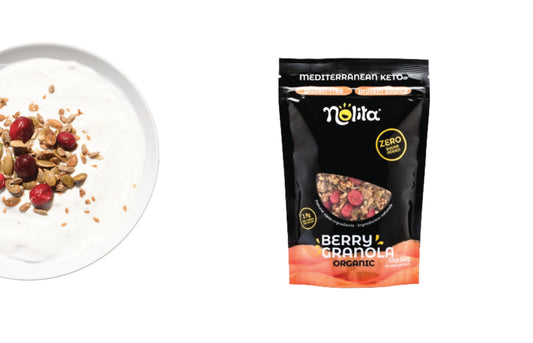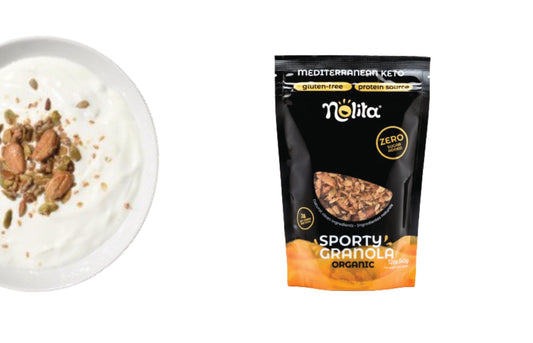The first thing that jumps out at us when we see a product is its label. Not the information on the label, but the logo, the colour and the font. These are often distracting factors that brands use to encourage us to buy something that may be healthy...or not.
That's why we decided to help you with 5 simple tips on what to look for on a label.
1) Sugars
We all like sweet things, so a lot of brands insist on adding unhealthy sugars to their foods to please the customers. There are plenty of items on the market that are naturally sweet and do not need added sugars. There are also those who have others sweet ingredients instead of sugar: honey, agave nectar, dates, coconut sugar. Don't full yourself. These are also sugars... in other forms. If you eat too much of these ingredients you are going to put on weight.
To be sure that you are not eating too much sugar you just have to look for the nutritional information per 100g and see the quantity of sugar:
- if you are happy with your weight, 10% of your calories can be made of sugar. So you can choose products with 10% of sugar to eat on a regular basis and with 15% to eat when you need a treat.
- if you are trying to lose weight, you should cut on sugar, so don't choose products with more than 5% of sugar... Do you think it will be difficult to find? Try our products.
2) Saturated fat
Saturated fats are fats that our body can't break down, thus contributing to increased cholesterol (LDL). To find out the level of saturated fats of a product, you should check its value per 100g in the nutritional information.
Look for products with less than 2% of saturated fat.
3) Ingredients list
Yes, we know that some products have an extensive list of ingredients and it would be very tedious to have to read it every time we buy something. So, let's give you some tips:
- Ingredient lists should have no more than 8 ingredients, otherwise, that product may not be so healthy.
- The ingredients are presented in descending order of their weight in the product, so the ingredients mentioned first are those that exist in greater quantity in the product.
4) Words you don't understand
Many of the labels we see in the market are written in a way that is not understandable to most customers. This is because many of the ingredients that appear are food additives. Some of them are healthy... others are not. So when you see labels that look like they were written by a food guru, don't panic... do a quick search on your smartphone to find out what these strange ingredients are and whether they are healthy.
5) Allergens
Many people have food intolerance (severe allergies are not common) to certain foods such as milk, wheat, gluten, peanuts, shellfish and nuts. It is essential to know if the item you are buying contains any ingredients that can cause allergic reactions. All the allergens are identified in the ingredients list, in capitals and / or bold.
If you have never experienced gastric discomfort or strange reactions on your skin when you eat some foods, you don't need to worry about allergens: it is safe to eat these ingredients and some of them are super healthy (like nuts...).
How to choose great alternatives!
Now that you know what to pay attention to on labels, you can choose better options. You can also follow our 4 NOs rule:
1 no added sugar,
2 no fast carbs (only whole grains),
3 no artificial ingredients,
4 no pesticides (organic products).
Photo:@pvsbond






